Archive for November, 2018
Ozarks history through a realistic lens
But Dr. Brooks Blevins, the Noel Boyd professor of Ozarks studies, works to change these misconceptions through his research. He pores over countless materials about the Ozarks and conducts oral histories to provide a truer picture of the area and the people who live here.
A lifelong Ozarker, Blevins grew up on his family farm in rural Arkansas. He always loved history. When he got interested in the Ozarks as a college student, he chose to study both and devote himself to research.
“Since I lived here, this topic was much more personal to me,” Blevins said. “I noticed there wasn’t much good history of this region. A lot of the writings were influenced by folklore and travel writers. They tended to be romantic and unrealistic.”

Map of the Ozarks. Map by Emilie Burke, maps and GIS student assistant, Missouri State University
What is the Ozarks?
The physical Ozarks is roughly 40,000-45,000 square miles. It covers much of the southern half of Missouri and a large part of northern Arkansas. It also extends into northeast Oklahoma and southeast Kansas.
While the physical Ozarks is well defined, its cultural boundaries are less so, Blevins notes. This is because people may live in the region, but do not identify as Ozarkers.
The first in a trilogy
Blevins has spent more than two decades discovering the Ozarks’ rich history. He has authored eight books, two of which are award winners.
His latest book – “A History of the Ozarks, Volume 1: The Old Ozarks” – came out in summer 2018. It’s the first volume in a trilogy that offers a comprehensive history of the region. No other book like this exists.
“I noticed there wasn’t much good history of this region. A lot of the writings were influenced by folklore and travel writers. They tended to be romantic and unrealistic.”
Volume one highlights the early days of the Ozarks before the Civil War. It chronicles the area’s formation and the lives of Native Americans. It also documents European colonialism and the mass migration of settlers.
Blevins writes about people as they hunted, fished, founded schools and churches, and developed communities. He tells colorful human stories within the context of what was going on in American history at the time.
Blevins says the most surprising discovery during his research was the central role “immigrant Indians” played in the old Ozarks. These displaced natives from east of the Mississippi River came from different tribes.
“For about two generations, thousands of them lived in the region. In the 1820s, they even attempted to establish a sort of autonomous Indian nation in the Ozarks,” Blevins said.
Gary Kremer, executive director of The State Historical Society of Missouri, has read Blevins’ book. He says the breadth and depth of his research is outstanding.
“This book will enhance people’s understanding of the Ozarks because he brilliantly narrates the many ways in which the land and the people of the Ozarks interacted to shape each other,” Kremer added.
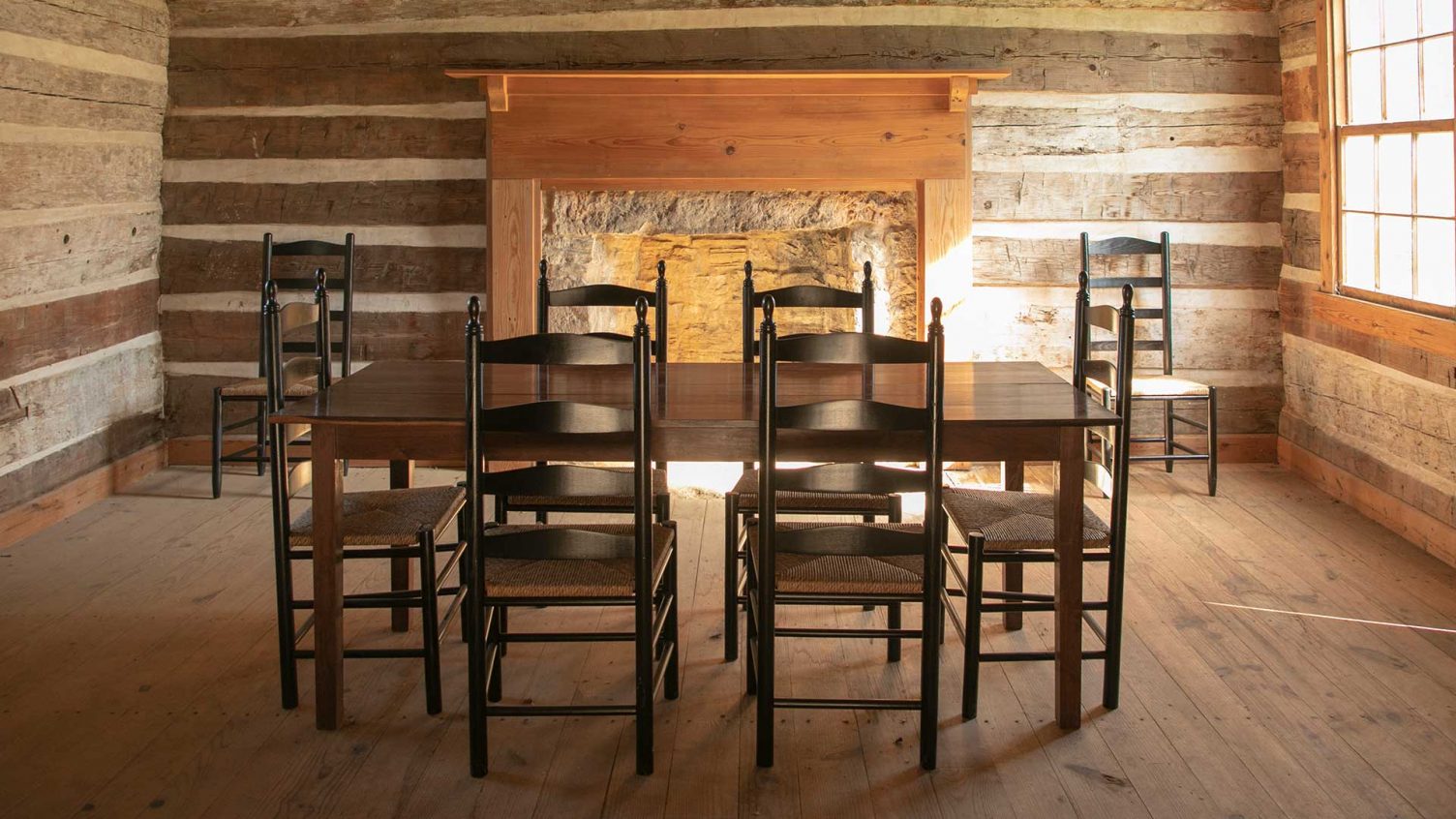
The Jacob Wolf House in Norfolk, Arkansas, served as the first permanent courthouse in Izard County. Photo by Bob Linder
A sneak peek
Blevins is working on volumes two and three of his trilogy. The target publication dates are summer 2019 and 2021, respectively.
Volume two will focus on the long Civil War and Reconstruction era. Its main topics include slavery in the Ozarks, the secession crisis, the resulting war and the region’s reconstruction. It will also introduce the idea of the cultural Ozarks.
The third volume will pick up the story at the end of the 19th century into the 21st century. It will include a wide array of topics, from farming and industry to music and tourism.
“Underlying almost all the books’ subjects is an ongoing exploration of the perpetuation of cultural stereotypes and the role that the region’s image has played on its history and development,” Blevins said.
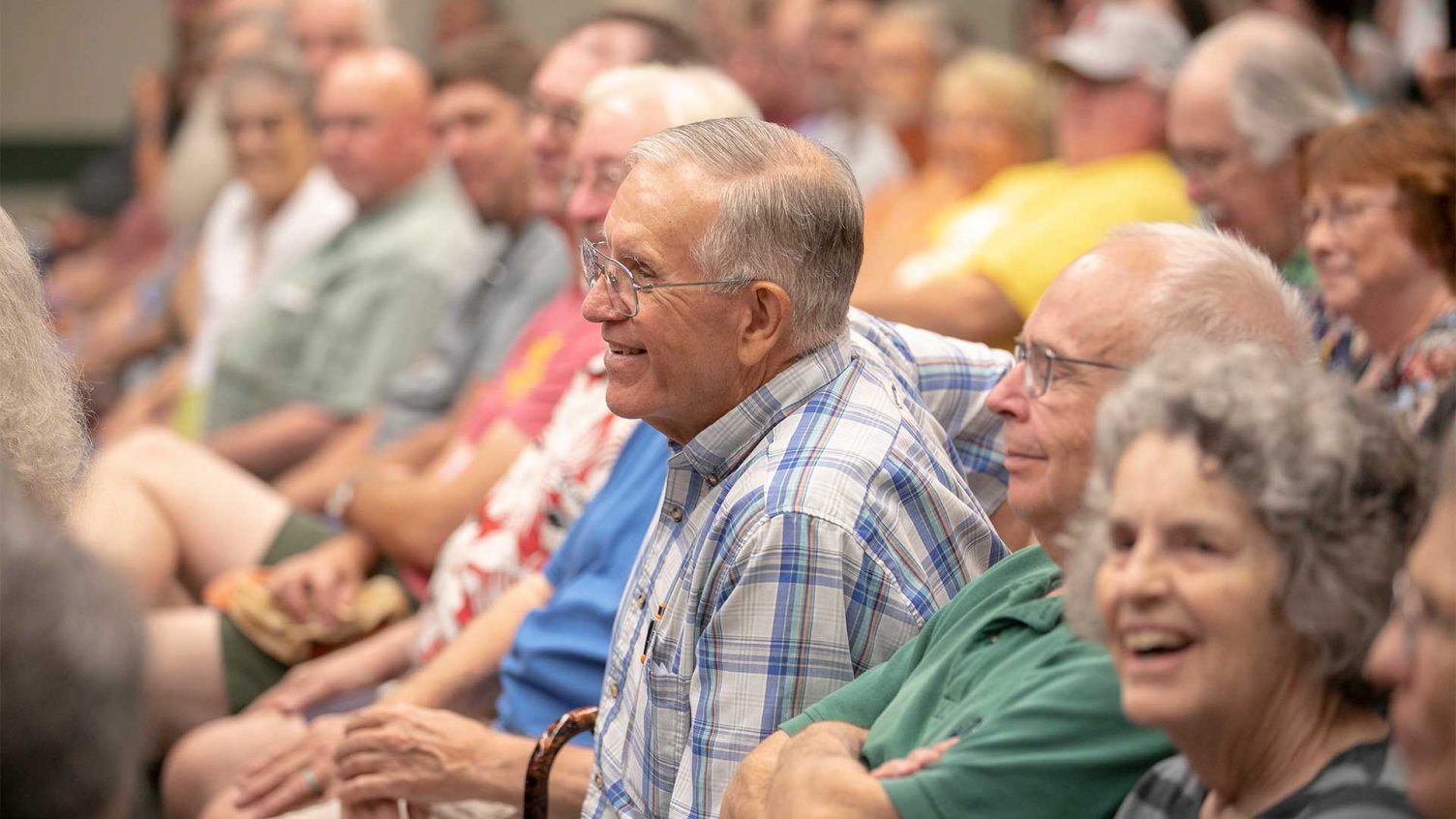
A large crowd gathered as Dr. Brooks Blevins shared about Ozarks history and explorer Henry Schoolcraft in September 2018. Photo by Bob Linder
Relating to the masses
While Blevins is an academic, he tries to write history books that connect with common folks. He wants people in the Ozarks to know they have a valuable regional history of their own and take pride in it.
“It’s often a warts-and-all story like the American experience in general,” Blevins said. “But there are many interesting and iconic people and things that had their origins right here in the Ozarks.”
- Story by Emily Yeap
- Main photo by Bob Linder
- Video by Carter Williams
Further reading
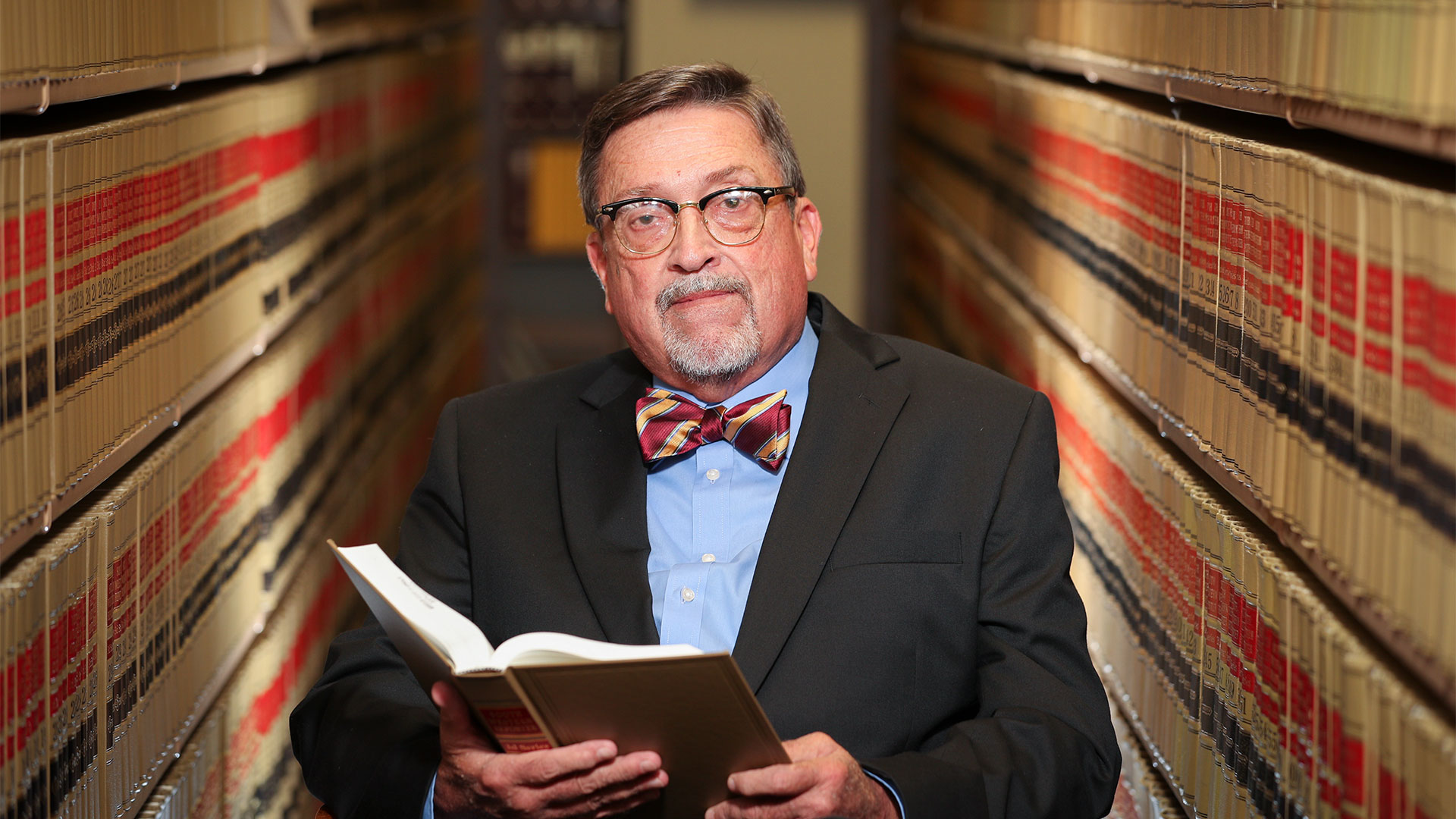
Influencing the future of arbitration
Dr. Stanley Leasure’s work may give you one more thing to consider when you sign an employment contract or read the employee handbook. What happens when something goes wrong?
Probably no more than five percent of the lawyers teaching at law school have anywhere near 25 years experience.
“Many big companies want to limit your ability to sue them – of course they do,” Leasure said. “It’s messy and expensive. But more than that, it’s an exhibition that they don’t want.”
Leasure, a business law professor, was a partner in an Arkansas law firm for more than 25 years before joining the Missouri State University faculty. His interest in alternative dispute resolution – like arbitration, negotiation and mediation – began there.
Now he studies cases and rulings to deduce how the courts interpret the Federal Arbitration Act. He publishes articles on the precedents set forth and the discrepancies he sees. His work has influenced several court decisions. It has even been cited by attorneys appearing in the U.S. Supreme Court.
Arbitrators decide your future
Every day, more companies are placing clauses in their employment contract or employee handbook that state litigation is not an option in case a dispute arises. Instead, companies prefer – and are requiring the use of – arbitration.
Why arbitration? Because it is less costly, it’s conducted in private and it’s usually much quicker.
An arbitrator’s decision is considered final, legal and binding. Leasure is trying to influence how and when attorneys should be able to appeal the decisions.
“Who gets to decide? When are parties bound by an arbitration agreement? What issues are covered by the agreement? These are some of the questions I’m asking,” he said.
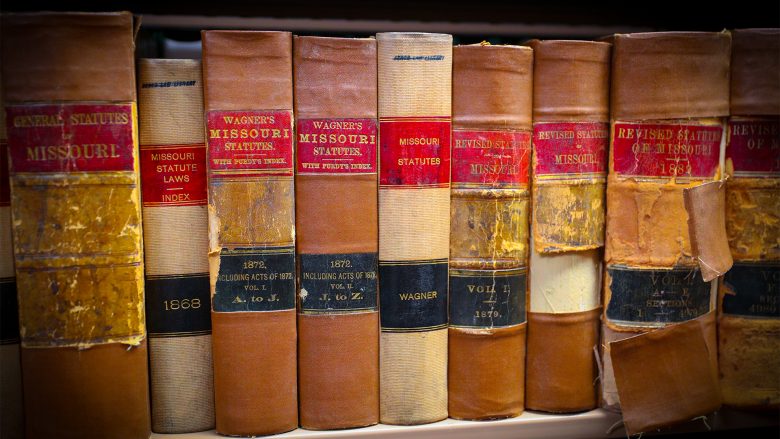
Volumes filled with Missouri’s state statutes line the shelves of the library in Missouri’s Court of Appeals. Photo by Kevin White
Pandora’s box
When the Federal Arbitration Act passed in 1925, it contained a few circumstances when an arbitrator’s decision could be overturned in court. Since then, more and more people dissatisfied with an arbitrator’s decision appeal to federal court.
Legal scholars have a unique ability to affect the development of the law.
“This is where Pandora’s box is really flung open,” Leasure said.
Courts interpret the nuances of those original exceptions differently. And several have expanded the exceptions beyond those in the Federal Arbitration Act.
While the courts have moved to revert to the original exceptions, some of the newer exceptions are still in play. Until all of the additions have been removed, Leasure expects more cases to make their way through the appeals process.
“It’s unsettled,” Leasure said, but it gives him great inspiration for future studies.
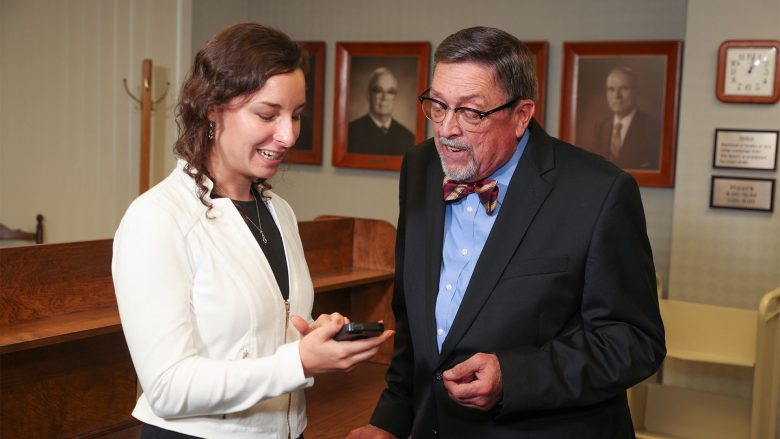
Ariel Kiefer, an MSU alum, and Dr. Stanley Leasure peruse Twitter for trending topics in alternative dispute resolution. Photo by Kevin White
Finding inspiration
Besides reading the latest literature, Leasure scours Twitter for hot topics.
Sometimes he approaches his high-achieving students about collaborating on a research project. It’s a virtual collaboration since he primarily teaches online courses. But students like Ariel Kiefer considered it a great experience.
“Dr. Leasure helped me explore a topic and let me have a substantial part in researching and framing the article,” said Kiefer, a 2015 MSU graduate. “The skills I learned with his guidance were a great help in law school.”
Leasure agrees. Collaborating with his students can accelerate research projects. Ultimately, that means he’s influencing the interpretation of the law in two ways at once.
“I’m getting my viewpoint in front of attorneys and judges in these articles, and they are citing our articles in their decisions,” he said. “I’m also coloring the way my students see these dispute resolutions. And they are taking that into their future careers – law or otherwise.”
- Story by Nicki Donnelson
- Main photo by Kevin White

